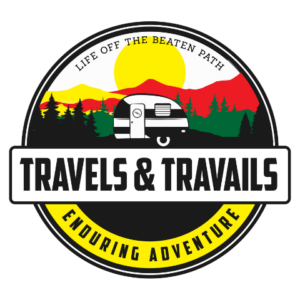California has always been a road trip destination for you, but it was too far out of reach before you owned an RV. Now that you have a motorhome of your very own, you envision driving it down to a Cali beach, sleeping under the stars, and waking up to the gentle lulling of waves and the streaming sunlight. Can you?
In most of California, you cannot sleep on the beach. You’ll see signs prohibiting the behavior. Some beaches that do welcome overnight stays in an RV or camper include:
- Parson’s Landing
- Crystal Cove State Park
- Refugio State Beach
- Point Reyes National Seashore
- Thornhill Broome Beach
Before you plan your dream California road trip, make sure you read this article. I’ll discuss where you can and can’t camp out in California so you can create an itinerary!
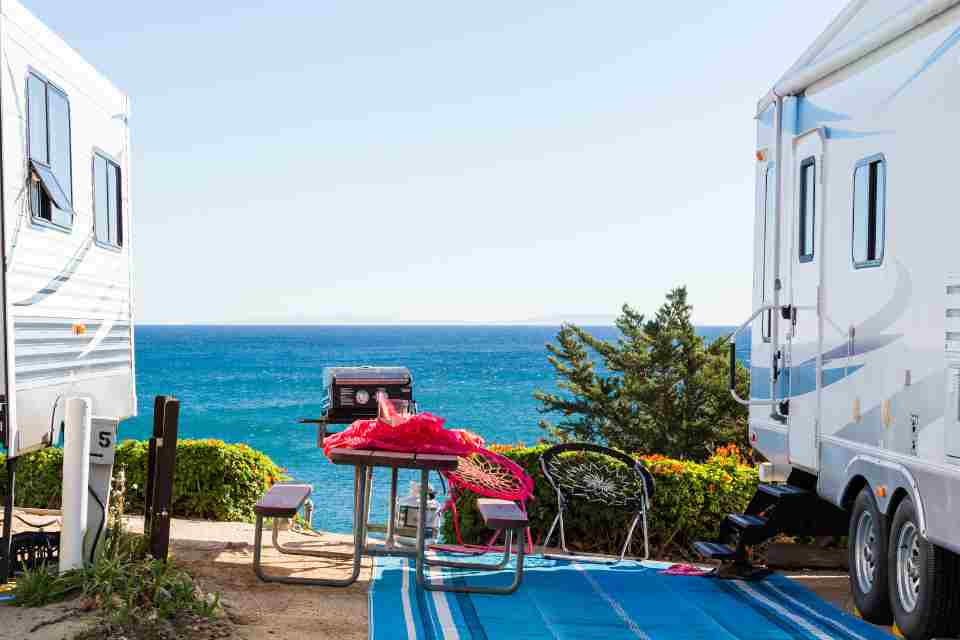
So, Can You Sleep on a Beach in California?
You can picture it in your head. You arrive in California just as the sun goes down and witness one of the most beautiful sunsets you’ve ever seen. Then you make your way onto the beach.
The sand will roll gently underneath your camper or motorhome’s tires. The empty beach will give you plenty of spots to camp out for the night. You’ll choose a spot a good distance from the water that affords you great views of the stars and moonlight.
You’ll fall asleep listening to the tide and wake up to the beauty of a California morning. Well, it sounds good in theory, but in practice? It’s often illegal.
If you see a beach with a sign prohibiting overnight camping–and you will, a lot–then that’s it, the dream of camping on the beach has to die, at least on that beach.
Why Can’t You Sleep on a Beach in California?
Although sleeping on a beach in California may be your dream, it’s a nightmare for many other parties. Let’s look at some reasons why it’s simply not feasible for you to camp out on the beach overnight in much of California.
You Could Damage Preserved Lands
Did you know that 16 percent of California constitutes protected lands? From state marine recreational management areas to state waters and coastal state waters, the state strives to protect its natural beauty.
That includes preserving the dunes at many beaches. Dunes do more than add to the appeal of a beach. They also support ecological environments so species in the area can live there.
Further, dunes safeguard the coast from tall waves and storm surges.
Most dunes have fences around them, but in the dark, you might miss those fences and collide with the dunes, erasing years of progress on that beach.
The pressure of your RV or camper tires driving along the sand could crush sensitive creatures that live underneath or otherwise disrupt the ecosystem. You could also damage protected lands.
It’s not only that you’d have to live with the guilt of what you did. If the local police force could tie the crime to you, you could receive a fine of $1,000 to $5,000 for vandalism if that’s what the police rule your crime as.
You Could Cause a Crime
Speaking of crime, there’s a possibility it can happen, even on a Cali beach at night.
According to the Public Policy Institute of California, crime rates in the state jumped in 2021, with 67 percent of the reported crimes violent in nature.
Now, I’m not saying you would ever do something like that but think of it from the local government’s perspective. Lifeguards don’t patrol the beaches at night. No one does, really.
Nefarious characters could gather on the beach, and a whole assortment of illegal activities could happen. It’s too risky to allow access to beaches after dark.
You Could Be a Victim of a Crime
Besides the risk of you carrying out a crime, there’s also the possibility that you could become a victim.
I have already discussed the prevalence of violent crimes in California. In 2021, another 24 percent of reported crimes were burglaries, eight percent were rapes, and one percent were homicides.
When you’re out on the beach after dark in just your camper or RV (or if you’re camping out under the stars in a tent), you put yourself at risk of becoming the victim of some very serious crimes.
Again, it’s too serious of a risk to allow most California beaches to stay open after dark.
It’s a Bad Look for the Beach
California may be a big tourist destination, but the state can always attract more visitors.
When people come to the Golden State, they do so primarily for its beaches. Now imagine getting an early start to the day and visiting a beach to find it littered with campers.
It’s not exactly the best look. Tourists will wonder why you’re sleeping on the beach. Can’t you go to a parking lot or a hotel instead?
These tourists might leave the area, losing revenue for that city, town, or municipality.
10 California Beaches and Campgrounds Near the Beach That Permit Camping
As valid as the above points may be, that doesn’t mean every beach and oceanic area in California abides by the same rules. If you do some digging, you’ll find plenty of beaches that allow RVers and campers.
Here’s a list.
1. Parson’s Landing
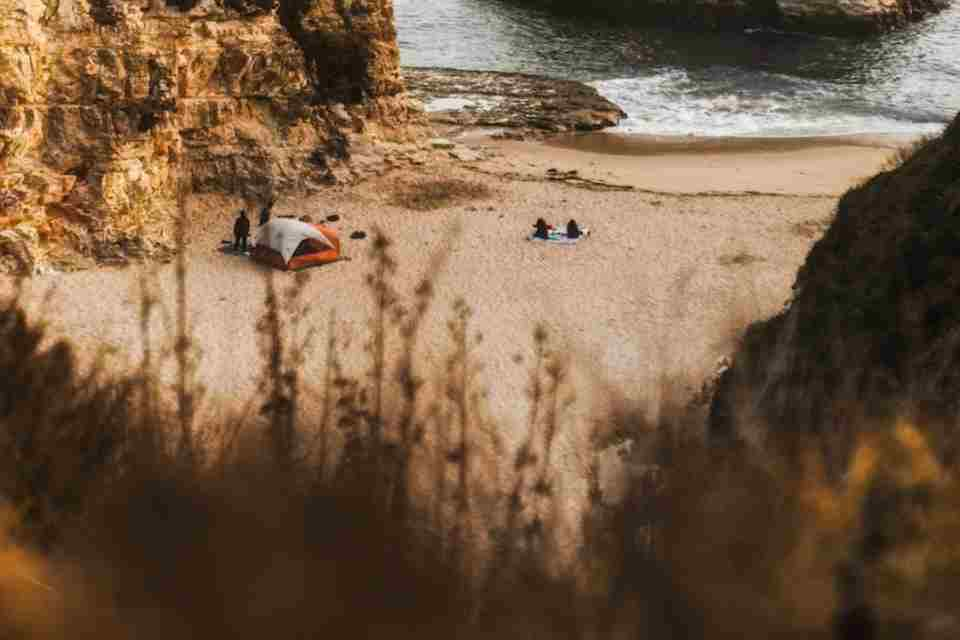
The beach campground Parson’s Landing near the Two Harbors village has eight campsites. The seclusion and gorgeous views make it worth camping here alone. You’ll also find two hiking trails and rentable kayaks for staying busy.
If you’re thinking of hiking the nearly 40-mile Trans-Catalina Trail, Parson’s Landing makes a great stop along the way. It’s also a nice place to relax for a few days even if you’re not so big into hiking.
The available amenities for campers include a chemical toilet, picnic table, fire ring, and BBQ. You can also buy firewood and water, but you must purchase a pre-stocked locker with these supplies.
The adult rates start at $24 a night and cost $29 a night in the summer.
2. Two Harbors Campground
Overlooking the Pacific Ocean on a bluff, you’re not technically camping on the beach at Two Harbors Campground, but you’re close enough!
Camping on Catalina Island in a tent cabin will be an unforgettable experience. You’ll have access to fire pits, BBQs, picnic tables, fresh water, chemical toilets, and showers. A nearby general store lets you stock up on whatever else you need.
The winter rates for adults cost $29 a night, and the summer rates are $31 a night. If you want to stay in a tent cabin, you’ll pay $76 to $86 a night.
3. Crystal Cove State Park
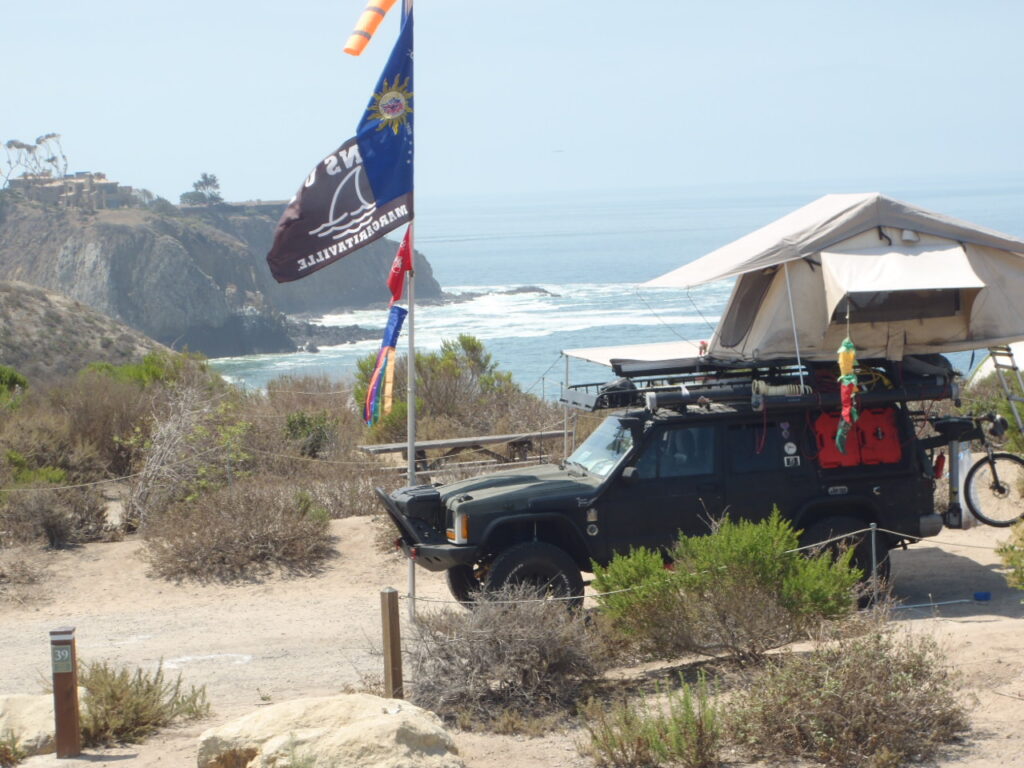
Orange County traditionally forbids campers from sleeping on the beach, but at Crystal Cove State Park, you’ll get as close to the waves as legally allowed.
The park affords you nearly four miles of unadulterated coastline views, including Newport Beach, which partially encompasses the park.
You can also explore the famous Crystal Cove Historic District, which has cottages from the 1920s and 1930s and is listed on the National Register of Historic Places.
The nearly 4,000-acre park includes 2,400 acres of backcountry wilderness. You’ll pay $15 a vehicle per day to stay here.
4. Refugio State Beach
In Santa Barbara County, the protected Refugio State Beach welcomes campers and RVs measuring up to 27 feet long. The state beach park near El Capitan State Beach has picnic sites, palm trees aplenty, trails, kayaking tours, and an accessible beach.
During peak season between March and November, you’ll spend $45 a night to stay here. The premium sites cost $55 a night during the peak season.
5. Julia Pfeiffer Burns State Park Campground
I’d also recommend the Julia Pfeiffer Burns State Park Campground to experience the natural outdoor beauty of California. This Monterey County state park is only 12 miles from Pfeiffer Big Sur State Park.
The towering redwoods stand over 300 feet here and have been around for more than 2,500 years! You also won’t want to miss McWay Falls, which features a dramatic 80-foot drop into the Pacific below.
The hike-in camping areas will allow you to drink in the beauty of the Pacific Coast, but you must make a reservation first. With the premium sites more expensive, you’ll spend $30 to $50 a night for a campsite here.
6. Point Reyes National Seashore
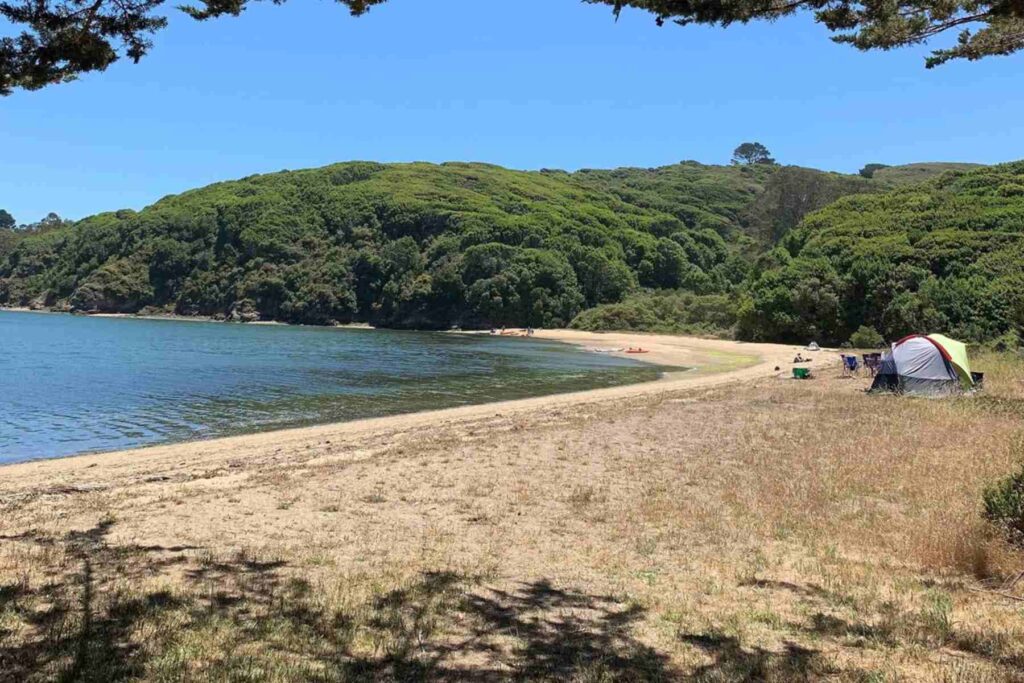
The stretch of protected land known as Point Reyes National Seashore along Marin County includes the Philip Burton Wilderness and Wildcat Beach.
You’ll camp in the designated camping area, of course, with beachside camping available on a limited basis.
The available activities include birding, enjoying the beaches, viewing wildlife like whales or tule elk, kayaking, hiking, and boating.
You’re charged by the size of your group. If you have one to six people in your RV, you’ll pay $30 a night. For seven to 14 people, you’re charged $60 a night, and for 15 to 25 people, $90 a night.
7. Marshall Beach
Not to be confused with the San Francisco beach called Marshall’s Beach, Marshall Beach in Marin County sits on Tomales Bay’s west side.
It extends 400 feet long and makes for a popular spot for swimming, motorboating, paddle boarding, canoeing, and kayaking.
For you land lovers out there, you can ride horses or bikes on the Marshall Beach Trail, a 1.2-mile-long stretch of road.
8. Thornhill Broome Beach
In Point Mugu State Park, you’ll find nearly 70 campsites available for rent at Thornhill Broome Beach. The two-mile beach offers sights and surfing on the Pacific Ocean.
The size of each campsite is approximately 12 feet wide by 31 feet long, so larger RVs need not apply.
When you’re done soaking up the sun and surf, you can always try the hiking trails here, including the Scenic and Overlook Trail, the Mugu Peak Trail, and the Grotto Trail. Two of the three trails are rated as easy (all but the Mugu Peak Trail).
You can take a shower if you have the tokens for it and burn firewood if fire levels for the day allow it. You’ll pay $12 in parking per day per vehicle.
9. Coast Campground
Point Reyes’ Coast Campground in Marin County isn’t maybe the most luxurious campsite you’ll ever see, but the nature and beach views make it worth adding to your shortlist of places to camp out in California.
The campground has vault toilets, picnic tables, and potable water. It’s a great spot for a night or two of natural refuge.
10. Oceano Dunes
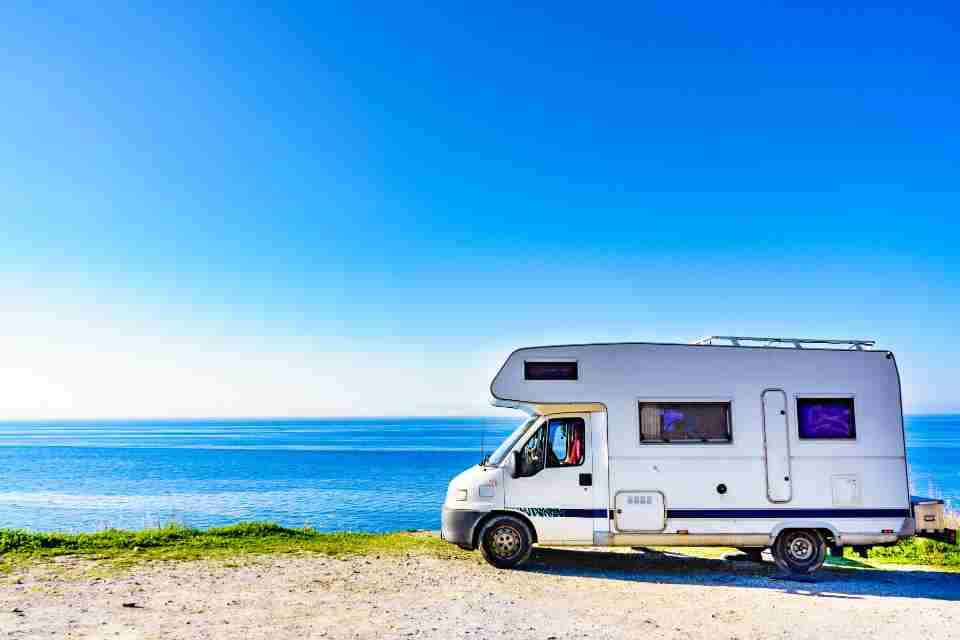
Last on the list is Oceano Dunes State Vehicular Recreation Area.
This campground with desert and beach views has activities such as horseback riding, boating, hiking, fishing, snorkeling, scuba diving, swimming on the beach, and wildlife and nature viewing.
You can also spend your days geocaching, surfing, and windsurfing!
The available amenities include outdoor showers, restrooms, parking, and potable drinking water.
Conclusion
As much as sleeping on a beach in California might be your dream, in most cases, you have to dream on. Throughout most of Cali, you can’t sleep on a beach in an RV, tent, camper, or anything in between.
I’d recommend broadening your horizons and seeking campsites and parks that allow for overnight stays in a motorhome or tent.
You can finally achieve your goal of sleeping near the beach (and, in some cases, even on the beach) but do so legally!
